Total construction spending rose 5.5% year-over-year (unadjusted) in June 2018. On a seasonally-adjusted basis, spending fell rather sharply two months ago though that doesn’t really matter given the short-term noise of month-to-month changes. The real problem is this 5.5% given that public construction has been moving higher since last year’s big hurricanes.
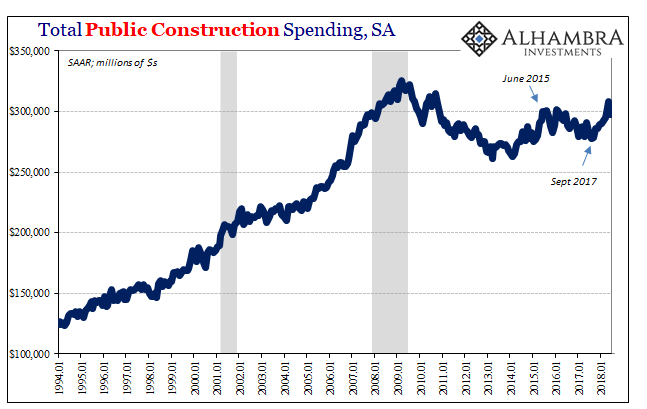
In other words, it’s the private channel that is still concerning. Residential housing is in a bit of a slump, which the construction figures do pick up on. It may not look it at first glance, but the change in trajectory (non-linear) is significant.

The appeal of housing projects should be overwhelming at 4% unemployment, 4.1% GDP, and this massive purported LABOR SHORTAGE!!! Yet, going back to early last year residential construction (along with resales) has been weaker than it had been even during the 2015-16 downturn. Last week’s GDP numbers puts this slump into perspective:
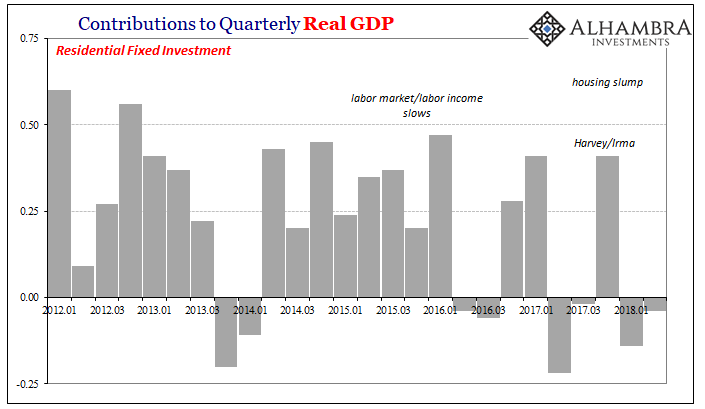
Outside Q4 2017, residential activity has been a drag on GDP for more than a year. There was somewhat of a rebound in later 2016, but it doesn’t appear to have lasted all that long. This contradicts, as usual, the common view of the economy as accelerating into a boom during this same time frame.
And that’s not even the most concerning portion of these construction figures. The big problem is on the other side of the private ledger. Non-residential construction is flat for now two years running.
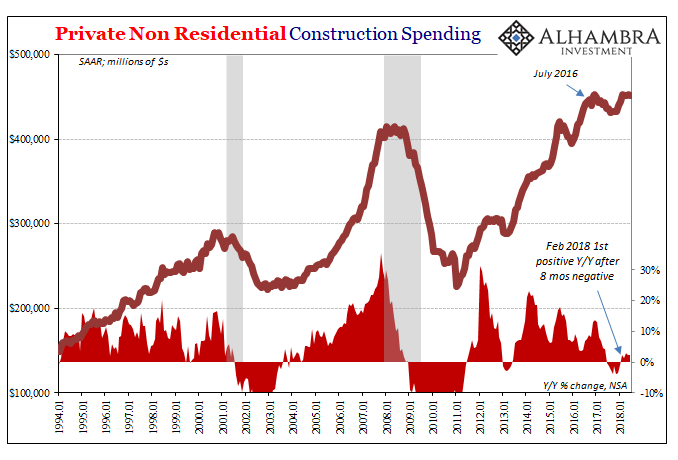
Unadjusted, year-over-year changes are barely positive this year after contracting a little in 2017. The net result, which you can see clearly in the seasonally-adjusted SAAR levels, is that non-residential construction was in June estimated to have been a little less than it was in December 2016; and barely more than July of that year.
Businesses are not building for a rapidly growing future, an inclination they’ve already established in inventory levels. In either important case, American companies are quite conspicuously choosing not to invest in this “boom.”
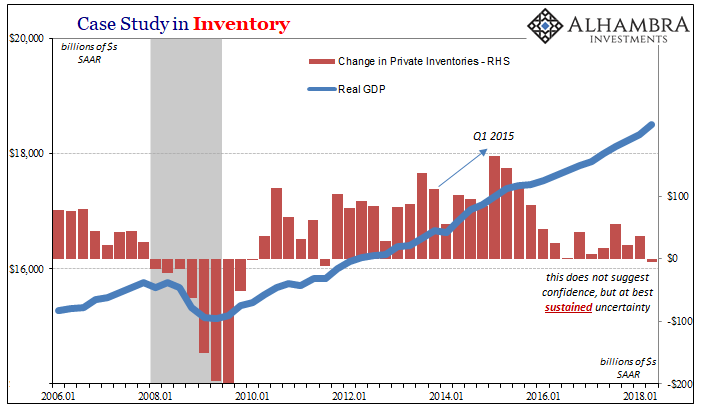
We can add the labor market into that alarming mix, as well, given how it has slowed in its pace since the “best jobs market in decades” supposedly three and four years ago.
Something is very much amiss here, at least from the perspective of an officially “strong” economy. Even the Economists of the FOMC understand the nature of this supply side. In other words, if businesses aren’t investing in any way or channel, facilities, inventory, or workforce, that doesn’t bode well for much beyond the latest quarter. They won’t say as much in public, but that doesn’t mean there isn’t private angst (which spills over into the outside when they refrain from acting).
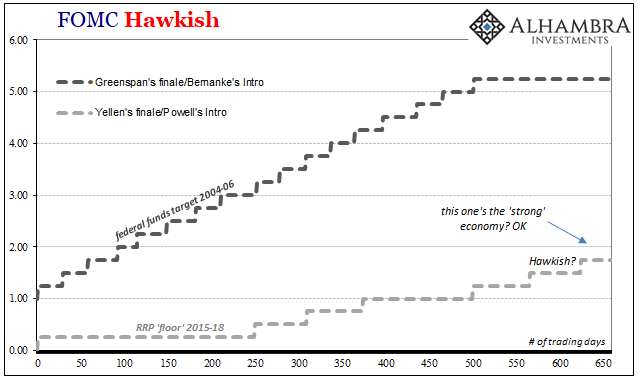
Instead, this plain reluctance underscores both the fragility of the current economy as well as how anyone can say it is a boom but that won’t mean anything. It will be booming only when US businesses act like it is. They aren’t, and it’s been two years and more already.
